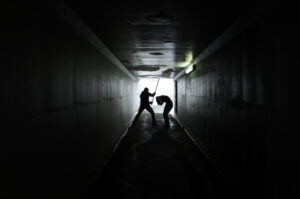The offshore earthquake, though powerful, was barely felt on shore so no one was prepared for the tsunami that followed.
The northeast coast of Honshu, Japan, in Iwate Prefecture, was hit with a powerful earthquake of magnitude 8.4 on March 2, 1933. It was followed by a tsunami that reached heights of seventy feet, causing catastrophic destruction to countless homes and ships and taking the lives of more than 6,000 people.
An almost identical event occurred in the same location in 1896, causing the deaths of more than 26,000 people. The lower death rate in 1933 reflects, in part, the precautions taken after 1896 earthquake to cope with possible future earthquakes and tsunamis. It is also partially explained by the difference between the two causal earthquakes.
The 1896 event with the same name and a greater magnitude, 8.5, occurred on a reverse fault, as an interplate event, instead of the normal pattern, and this resulted in less shaking and slower initial speed. Its epicenter was ninety miles offshore, near an area of very deep water known as the Japan Trench, where the Pacific Plate subducts beneath the Asian Plate. Because of the nature of the fault, the impact on shore was much weaker than would normally be expected from such a powerful earthquake.
Hence, people on shore paid little attention to the mild shaking they experienced so there was little expectation of a tsunami, even though this part of the Japanese coast experiences earthquakes frequently. Thirty-five minutes after the earthquake, the most devastating tsunami in Japan’s history reached the shore at the same time as high tide. In some places the tsunami’s wave reached a height of 125 feet. Everything in its path was totally devastated.
It was quite a different story with the 1933 event. The ground shaking was much more violent as the tsunami reached the shore about forty minutes after the earthquake. There were widespread cracking of walls and numerous landslides. Aftershocks followed, with the largest, occurring three hours after the main earthquake, having a magnitude of 6.8.
These aftershocks continued intermittingly for about six months. Many different studies have been conducted on this tsunami. The results indicate that tsunamis became much larger in areas with a V-shaped bay, such as those on a ria coast. Later studies found that tsunamis in general become larger in V-shaped bays when the earthquake occurs relatively close to shore.






















